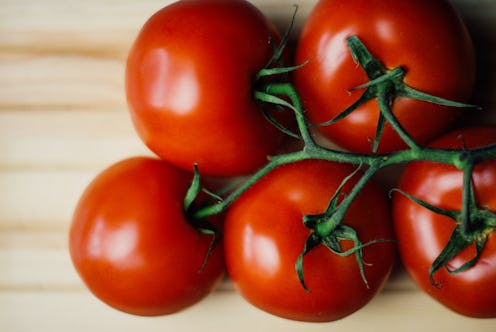
There is nothing worse than having to throw away food, which is why it doesn't hurt to brush up on a few food storage hacks before your next trip to the grocery store. When you're a self-proclaimed foodie like myself, nothing — and I mean, nothing — should come in between you and your food. This is especially true considering the kitchen is basically like your shrine. There's a pretty good chance you won't be impressed with technology until you can download food. And you'd probably be 100 percent content if your future husband or wife proposed to you with a breakfast burrito. I see you nodding in agreement from here; I knew I wasn't the only one.
The only downfall is that food doesn't last forever (unless we're talking about over-processed sweets, of course). But let's be honest with ourselves... the real stuff is where it's at. Fruit for those colorful smoothie bowls, cheese for mouth-watering juicy homemade burgers, avocados for that fresh guac. Are you drooling yet?
The key to making all of this happen is to get clever about food storage. Not only will your beloved ingredients and meals stay fresh longer, but you'll get the most of your hard-earned cash. Besides, no one is an official foodie until they get their storage hacks down pat. It's the best and only way to honor our one and only true love: food.
1. Make Guac Last Longer with Water
There's nothing better than whipping up a fresh batch of guacamole. There's also nothing worse than realizing your precious guac has started to turn an unpleasant shade of brown after just a few days. Let's be real: who likes throwing away guacamole and heading back to the grocery store? That's right... no one.
Next time, try this trick: add a thin layer of lukewarm water to the guacamole. The water acts as a barrier from oxygen, preventing the guacamole from browning. When you're ready to eat a burrito/nachos/anything, simply pour off the water. Give it a stir and it's ready to go. This method will keep your guacamole fresh for several days, avoiding last minute trips for new avocados. Less time shopping, more time eating. Win.
2. Store Herbs in Water
While herbs can easily be used when dry, fresh herbs are something special. Give them more time to shine by placing them in a glass jar of water. This is a great technique if you have a ton of fresh herbs, but only so much to cook. Not only will this save you a trip to the farmer's market, but they look pretty on the counter, too.
3. Don't Keep Eggs in the Door
See those eggs on the shelf? This is the best place to store them. When placed in the door, they go through extreme fluctuations in temperature. This back-and-forth kills the freshness of the eggs, which is terrible news for any professional breakfast eater. Do it for the omelettes, guys.
4. Store Dry Food in Air-Tight Containers
Dry foods like cereal, pasta, and oats sometimes come in bags or boxes. Instead of keeping them in the original package, transfer them into an air-tight container. This will ensure that air doesn't sneak in, causing the dry food to become stale. Your best bet is to use a jar with a swing lid, just like in this photo.
5. Freeze Sauces in Jars
If you have extra sauce, salsa, or guacamole, freeze it! Leaving these condiments in the fridge makes them more susceptible to mold and other unpleasant things, warranting a trip to the garbage can. Trust me, I've been there — it's a sad moment.
Simply pour the sauce in a mason jar, screw the lid on tight, and pop it in the fridge. When you're ready to use it, take out the jar a few hours before and let it thaw in a bowl. This technique can also be used to save leftover dressings, oils, and pesto.
6. Keep Kale in Water
Like herbs, kale will keep longer when placed in a glass jar of water. Just don't forget to cut a bit of the stems before doing so. Change the water every few days, and your leafy greens will keep nice and fresh. This way, you can finally make that kale smoothie instead of tossing them out.
7. Cut Stems on Root Veggies
Before storing your root vegetables, chop off the stems and leaves. Typically, these veggies send their energy to their greens after being harvested. Cutting off the greens will keep the energy within the vegetable, and maintain freshness.
Not sure what counts as root vegetables? Think carrots, beets, sweet potatoes, and parsnips.
8. Store Cut Fruits and Vegetables in Jars
Glass jars seem to be the answer to everything. Keep your fruits and vegetables fresh by keeping them in good ol' mason jars. Add a piece of paper towel to the bottom of the jar to absorb moisture. When stored this way, your fruits and and vegetables will keep fresh much longer than the original packaging they came in.
For more great food ideas, check out Bustle on YouTube.
Image: Pexels